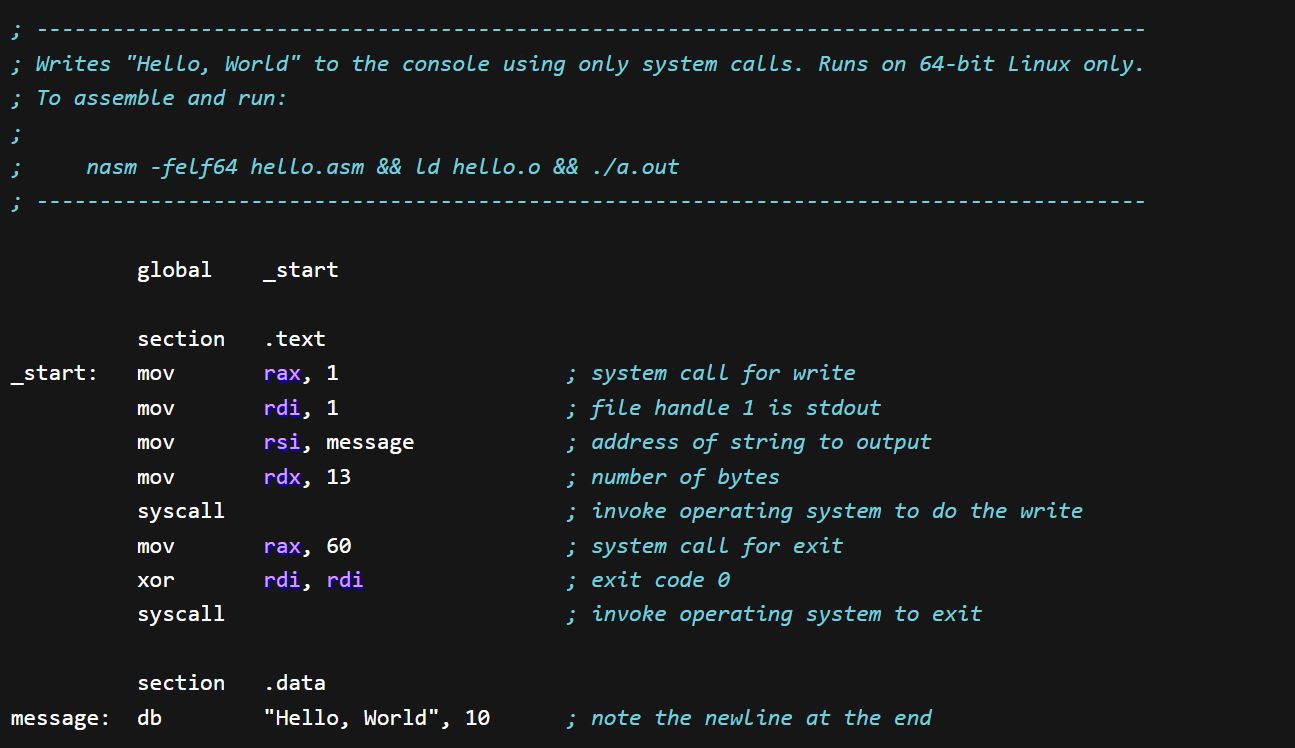
Assembly language might sound like a relic from the early days of computing, but it remains a powerful tool for programmers. Why is Assembly language still relevant today? Because it offers unparalleled control over hardware, making it essential for tasks requiring high efficiency and speed. Unlike high-level languages, Assembly allows direct manipulation of hardware resources, which is crucial for system programming, embedded systems, and performance-critical applications. Moreover, understanding Assembly can deepen your grasp of how computers work at a fundamental level. Whether you're a budding programmer or a seasoned developer, knowing Assembly can give you an edge in optimizing code and troubleshooting low-level issues. Ready to dive into the world of Assembly? Let's explore 27 fascinating facts about this enduring language!
Assembly Language Basics
Assembly language is a low-level programming language that is closely related to machine code. It provides a way for programmers to write instructions that a computer's CPU can execute directly.
- Assembly language uses mnemonics, which are short codes that represent machine-level instructions.
- Each assembly language is specific to a particular computer architecture, meaning code written for one type of CPU won't work on another.
- Assembly language allows for direct manipulation of hardware, making it very powerful but also complex to use.
- Programs written in assembly language are typically faster and more efficient than those written in high-level languages.
- Assembly language is often used in embedded systems, where resources are limited and efficiency is critical.
Historical Context
Understanding the history of assembly language helps appreciate its role in computing.
- Assembly language was first developed in the 1940s and 1950s, during the early days of computing.
- The first assembly language was created for the Electronic Delay Storage Automatic Calculator (EDSAC) in 1949.
- Early computers required programmers to write in machine code, which was tedious and error-prone, leading to the development of assembly language.
- Assembly language played a crucial role in the development of early operating systems and software.
- Despite the advent of high-level languages, assembly language remains important for certain applications.
Key Components
Several key components make up assembly language, each serving a specific function.
- Mnemonics are symbolic names for instructions, making code easier to read and write.
- Registers are small, fast storage locations within the CPU that hold data and instructions.
- Operands specify the data to be manipulated by an instruction.
- Labels are used to mark locations in code, making it easier to jump to different parts of a program.
- Directives provide instructions to the assembler, such as defining data or reserving memory space.
Advantages and Disadvantages
Like any programming language, assembly language has its pros and cons.
- One major advantage is the ability to write highly optimized code that runs very efficiently.
- Assembly language allows for precise control over hardware, which is essential for certain applications.
- However, it is more difficult to learn and use compared to high-level languages.
- Programs written in assembly language are harder to maintain and debug.
- Assembly language is not portable, meaning code must be rewritten for different types of CPUs.
Modern Uses
Despite its age, assembly language is still used in various fields today.
- Embedded systems often use assembly language due to its efficiency and low resource requirements.
- Operating systems and device drivers are sometimes written in assembly language for performance reasons.
- Real-time systems, which require precise timing and control, often rely on assembly language.
- Some high-performance applications, such as video games and graphics software, use assembly language for critical sections of code.
- Security researchers use assembly language to analyze malware and understand how it operates.
Learning Assembly Language
For those interested in learning assembly language, several resources and strategies can help.
Assembly Language: The Heart of Computing
Assembly language, often seen as the bridge between high-level programming and machine code, remains a cornerstone in the world of computing. Its importance in understanding how software interacts with hardware can't be overstated. From its role in early computing to its continued use in embedded systems and performance-critical applications, assembly language has proven its worth time and again.
Knowing assembly language offers a deeper insight into how computers operate, making it a valuable skill for programmers and engineers alike. Whether you're debugging complex software or optimizing code for speed, assembly language provides the tools needed to get the job done.
So, next time you boot up your computer or use a smart device, remember the unsung hero working behind the scenes: assembly language.
Was this page helpful?
Our commitment to delivering trustworthy and engaging content is at the heart of what we do. Each fact on our site is contributed by real users like you, bringing a wealth of diverse insights and information. To ensure the highest standards of accuracy and reliability, our dedicated editors meticulously review each submission. This process guarantees that the facts we share are not only fascinating but also credible. Trust in our commitment to quality and authenticity as you explore and learn with us.
